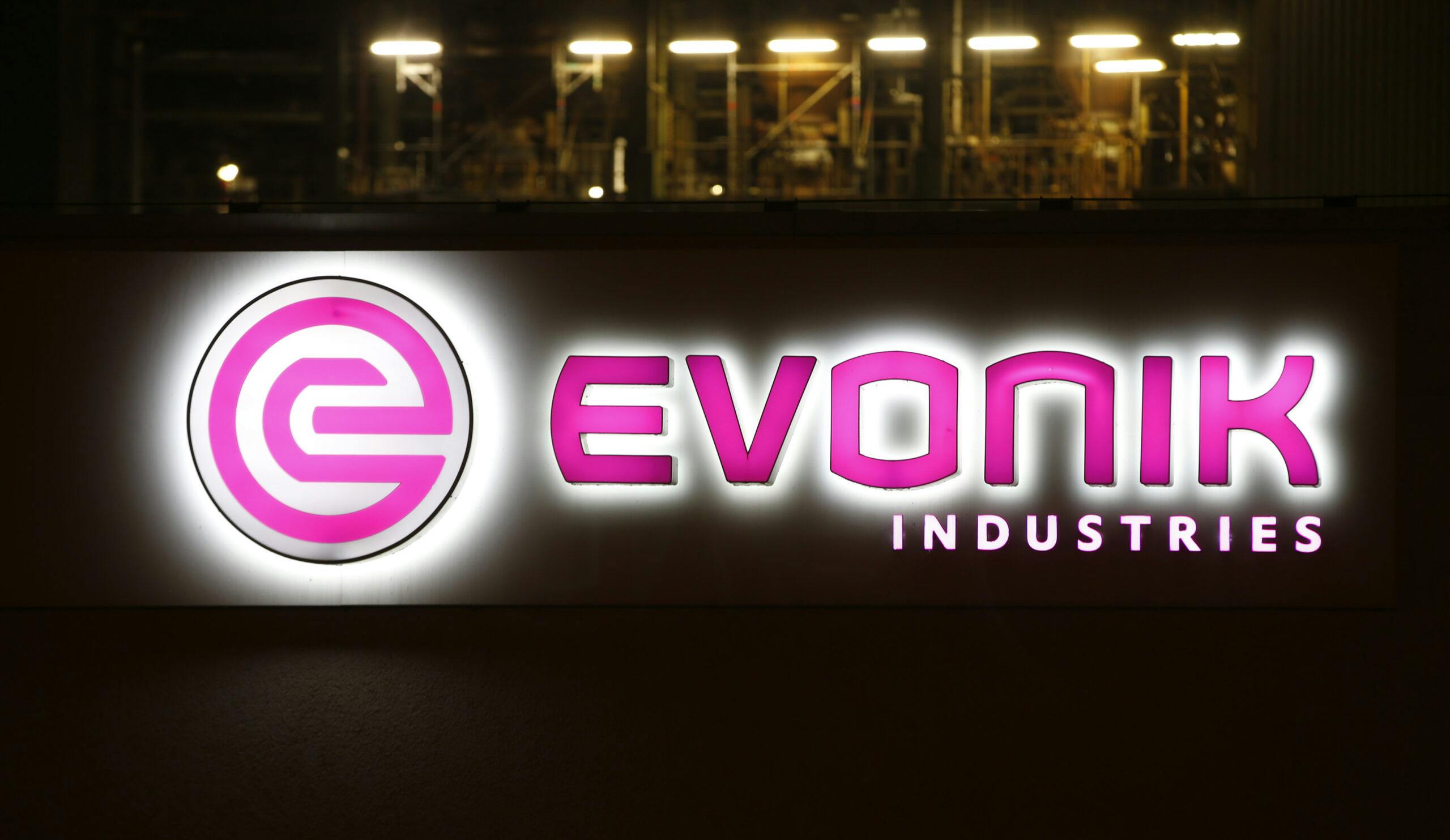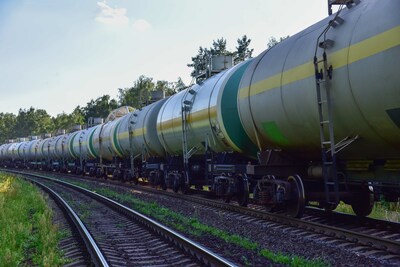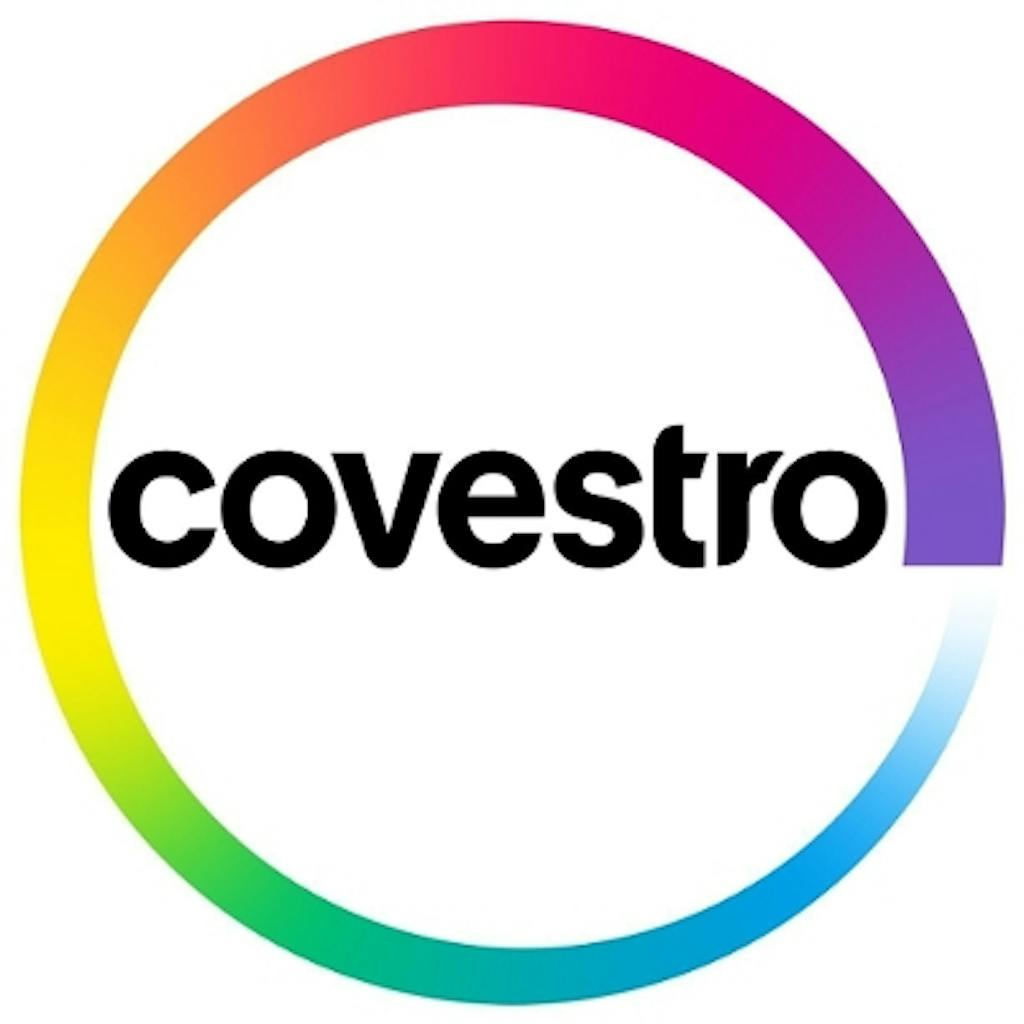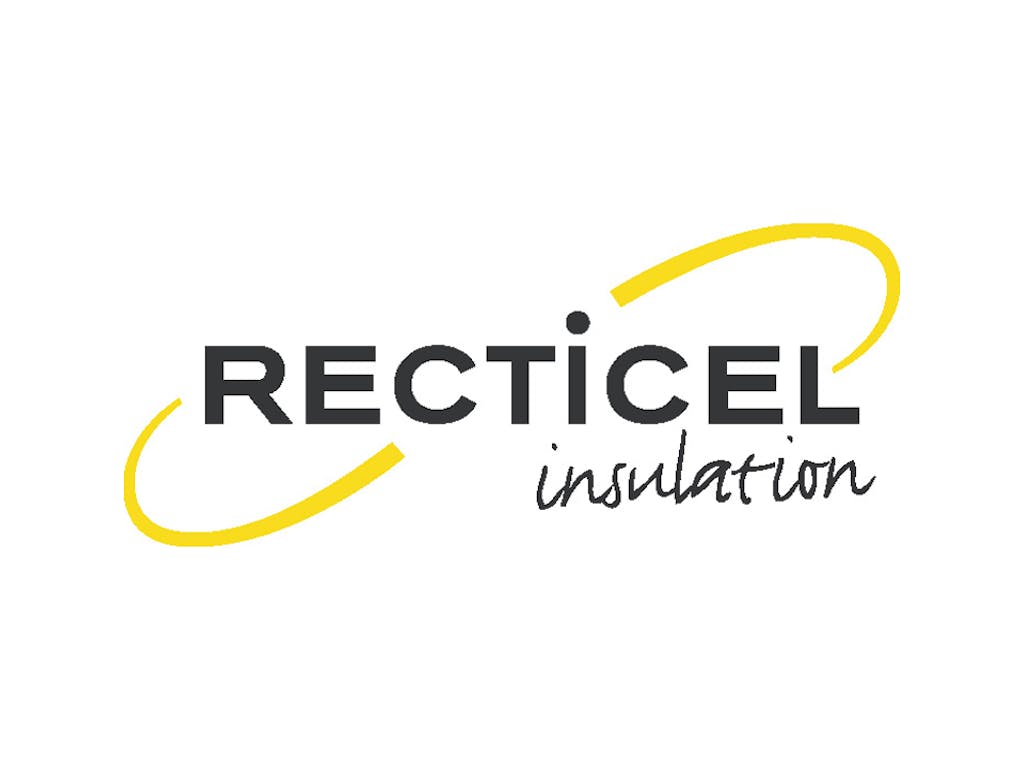Company News
March 4, 2024
Evonik Says Economic Recovery Unlikely in 2024, Plans 2,000 Job Cuts

March 4 (Reuters) – German chemicals group Evonik Industries said on Monday it did not expect an economic recovery in 2024 and announced up to 2,000 job cuts worldwide by 2026. The job cuts are expected to reduce costs by 400 million euros ($434.04 million) annually, the company said, adding that the majority – some 1,500 – would be in Germany. Chemical companies have been under pressure for more than a year, forced to reduce inventories on lower demand from industrial clients as energy prices soared.
“We will have to be prepared for the economic storm to continue in the global economy,” said CEO Christian Kullmann on a conference call, adding that the company hopes customers will be in a position to benefit from the more recent fall in energy prices. Evonik, whose products are used in items from animal feed and diapers to Pfizer/BioNTech’s COVID-19 vaccine, expects 2024 adjusted earnings before interest, taxes, depreciation and amortization (EBITDA) in the range of 1.7 billion to 2.0 billion euros ($1.84 billion-$2.17 billion).
This compares with a 2023 result of 1.66 billion euros which fell short of the 1.7 billion expected by analysts. The 2024 guidance is close to consensus and should reassure investors, JP Morgan said in a note. Evonik, a market leader in the production of amino acids used in poultry feeds, said on Monday it would sell its superabsorbents business to the International Chemical Investors Group (ICIG) for a price in the low triple-digit million-euro range.
The Essen-based company also said it would buy back shares worth up to 113.8 million euros including transaction costs. The group will propose an annual dividend of 1.17 euros per share, unchanged from the last year. Its 2023 sales fell 17% to 15.3 billion euros. Sales at its performance materials division, which accounted for around 13% of the total, fell by 22% to 2.55 billion euros after the company sold a production site in Luelsdorf in June.
https://www.reuters.com/business/evonik-says-recovery-unlikely-2024-plans-2000-job-cuts-2024-03-04/
March 4, 2024
Huntsman Introduces New Icynene Range of SPF Insulation

The Woodlands, Texas – Huntsman Building Solutions has launched a new line of spray polyurethane foam insulation under the Icynene brand. Customers will, the company said, also benefit from a robust service and support package.
There are six products in the range, covering both open-cell and closed-cell products. The two closed-cell SPFs are Icynene HFO 200, which gives an aged thermal resistance of 7.4/inch, and HFO Max, which combines the same R-value with a maximum 6.5” lift per pass.
On the open-cell side, Icynene OC No-Mix can be used in walls, ceilings, floors and attics, with an R-value of 3.9/inch, or 3.7/inch at 4 inches or greater. Ultra 50 has an R-value of 3.81/inch, and High-R 80 has a 0.75-pound density and air barrier properties, with an R-value of 4/inch. And Classic 45, with an R-value of 3.7/inch, can be installed in attics, crawl spaces and interior spaces with no ignition barrier.
“The Icynene range is undoubtedly one of our most notable launches to date,” said Doug Brady, chief strategy officer at HBS. “As our highest tier offering, these products speak to the long-term quality and reputation of the Icynene brand. We are pleased to offer them paired with an elevated service package to our valued customers.”
https://www.utech-polyurethane.com/news/huntsman-introduces-new-icynene-range-spf-insulation
March 3, 2024
Univar Acquires Valley Solvents
Univar Solutions Acquires Valley Solvents & Chemicals, Expanding North America Distribution Network and Market Expertise in Energy, Industrial, and Environmental Services

News provided by Univar Solutions LLC
01 Mar, 2024, 12:00 ET
Acquisition strengthens the Company’s local chemical distribution and custom blending capabilities and waste management services in the growing Texas, Gulf Coast, and northern Mexico regions
DOWNERS GROVE, Ill., March 1, 2024 /PRNewswire/ — Univar Solutions LLC (“Univar Solutions” or the “Company”), a leading global solutions provider to users of specialty ingredients and chemicals, today announced the acquisition of Valley Solvents & Chemicals Company and certain of its affiliates (“Valley Solvents”), a long-time distributor of solvents and inorganics and provider of waste management services in the Texas and Gulf Coast region. The acquisition expands the Company’s local chemical distribution network and valued-added services across its Chemical Distribution division, while strengthening environmental services capabilities for its ChemCare business under its Services division.
Univar Solutions Acquires Valley Solvents & Chemicals, Expanding North America Distribution Network


Valley Solvents is a key regional chemical distributor that has served the Texas and Gulf Coast region for over 72 years with a full range of chemical products and services, from delivery to disposal. Valley Solvents services more than 1,000 customers with an extensive bulk and packaged product portfolio, custom blending, waste management, and a specialty support focus in northern Mexico.
“We are committed to increasing our solvents and inorganics footprint to help our suppliers and customers grow their businesses,” said president and chief executive officer David Jukes. “The acquisition of Valley Solvents allows us to strengthen our North America Chemical Distribution division and enhance our environmental services capabilities in a growing market. With the integration of Valley Solvents’ operations, we believe we are well positioned to capitalize on opportunities with their strong local packaged business as well as in Energy and Industrial markets that have proven resilient throughout market cycles.”
Jim Holcomb, divisional president of Chemical Distribution for Univar Solutions, added: “The Valley Solvents’ team brings new customers and deep market expertise to the Univar Solutions platform. I’m excited to find new ways to bring greater individualized support and value-added products, such as custom solvent blending, to our customers in an increasingly critical area of North America.”
“Valley Solvents’ waste management services are a natural fit with our existing environmental programs and services offered through our ChemCare business, which support customers’ ability to achieve their sustainability objectives,” said Nick Alexos, chief financial officer and divisional president of Services for Univar Solutions. “Our focus on customer needs is an important part of our longstanding Growing Together strategy to be easy to do business with, as well as to optimize customer relationships and service.”
“I am so proud of the business our team has helped build over many decades, and we are excited to have found a partner in Univar Solutions that shares many of our values and aspirations. Becoming part of the largest chemical distributor in the United States is an exciting moment for the company and helps ensure continued success and innovation for our customers, suppliers, and employees,” said Bill Davis, president of Valley Solvents. “I am thrilled our legacy of service excellence, quality, and teamwork will continue to be part of Univar Solutions’ future.”
About Univar Solutions
Univar Solutions is a leading global specialty chemical and ingredient distributor representing a premier portfolio from the world’s leading producers. With the industry’s largest private transportation fleet and technical sales force, unparalleled logistics know-how, deep market and regulatory knowledge, formulation and recipe development, and leading digital tools, the Company is well-positioned to offer tailored solutions and value-added services to a wide range of markets, industries, and applications. While fulfilling its purpose to help keep communities healthy, fed, clean and safe, Univar Solutions is committed to helping customers and suppliers innovate and focus on Growing Together. Learn more at www.univarsolutions.com.
About Valley Solvents
Valley Solvents is a highly regarded regional chemical distributor headquartered in South Texas. Since 1952, the family-owned company has distributed an extensive portfolio of industrial solvents and chemicals, and provided waste management and other services responsibly, safely, securely, and on time to more than 1,000 customers across Texas, Oklahoma, Louisiana, and northern Mexico. Learn more about www.valleysolvents.com.
February 29, 2024
Urethane Highlights from Covestro’s Earnings Call
Covestro AG (CVVTF) Q4 2023 Earnings Call Transcript
Feb. 29, 2024 3:11 PM ETCovestro AG (CVVTF) Stock, COVTY Stock

Covestro AG (OTCPK:CVVTF) Q4 2023 Earnings Conference Call February 29, 2024 10:00 AM ET
Company Participants
Ronald Koehler – Head-Investor Relations
Markus Steilemann – Chief Executive Officer
Christian Baier – Chief Financial Officer
Carsten Intveen – Director-Investor Relations
Markus Steilemann
Thank you, Ronald and good afternoon, and a warm welcome also from my side. Looking back to another challenging year. While the effects of the coronavirus were easing significantly during 2023, the ongoing Russian war in the Ukraine is still impacting the economic development of Europe. The weak demand in most of the core industries that Covestro is involved in had a strong impact on our financial performance. Let me give you an overview of the key financials. In 2023, Covestro achieved sales of €14.4 billion clearly down versus 2022. This decline was driven by lower prices and lower volumes. The EBITDA also decreased to €1.1 billion, showing the severe demand crisis we are facing.
Despite the lower EBITDA, we could secure a positive free operating cash flow slightly exceeding our guidance. We ended our share buyback in the third quarter 2023 and executed around €200 million or 4.2 million purchased shares have been withdrawn and the share capital was reduced to now 189 million shares.
Before coming to the nonfinancial highlights, let me comment on the ADNOC status. We are pursuing the ongoing discussions with Abu Dhabi National Oil Company in accordance with our fiduciary duties in good faith, open minded and in the interest of our shareholders and all other stakeholders. As always, the progress and the final outcome of such discussions depends on the ability of both parties to agree on topics where the parties are of different views. We will further communicate when there is an outcome and of course, in line with our duties under the European Market Abuse Regulation.
After this more visionary topic, we are now coming to the business performance of 2023 and to the volume development for the last year. Year-on-year, the global sales volume decreased by 6.8%. This was caused by ongoing demand weakness across all regions and the already known limitations in our internal availability. However, rate of decline has decreased from quarter-to-quarter throughout 2023 and has turned positive in the fourth quarter 2023.
In the first quarter, sales volume year-on-year down by 17%, second quarter, down by 8% and third quarter, down by only 4% and Q4 sales volume finally turned positive by 3.2%. This was supported by the weak comparison base in 2022 and the improved product availability after our internal constraints were resolved.
How did the different industries develop? Auto was the only constantly growing industry globally during the full year 2023, benefiting from a healthy order book. After five consecutive quarters of contraction in furniture, the negative trend turned around by mid-2023, leading to an overall flattish development year-on-year.
Electronics encountered this turnaround only by the third quarter and as such, still exhibits a year-on-year slightly negative development. Despite a positive trend in the fourth quarter, the decline in construction industry is still the most prominent with a high single-digit negative development. Looking into the different regions, EMLA continued to be the weakest region with declines in three or four industries important to Covestro
There was a slight decline in Construction & Furniture and significant decline in Electro. A part of the weakness was also caused by the limitations in internal availability. Auto was the only positive industry with a slight increase. Sales volumes in North America also increased slightly in auto. Electro showed a flattish development and furniture and construction witnessed an ongoing significant decline.
Year-on-year Asia-Pacific witnessed a slight growth in furniture and auto, while Electro showed a flattish development. The decline in construction was particularly pronounced. With the summary of the full year 2023 demand development, I am now handing over to Christian, who will guide you through the financials.
Markus Steilemann
Thanks, Christian. We are now coming to the outlook for Covestro’s core industries on Page 14 of the presentation. The global GDP expectation for 2024 is estimated to be 2.4%. Sadly, this slight growth does not apply for most of the key industries for Covestro. Automotive was the positive exception during the past two years. However, after the industry worked through its order book, it is now showing significantly lower growth with only 0.8%. Against this trend, the subcategory of electric vehicles, battery electric vehicles is still rapidly expanding with a predicted growth of almost 29%. This impressive number again outperforms all other growth rates we currently see in our core industries, and especially our Engineering Plastics entity will benefit from this still ongoing trend towards BEVs.
The outlook for the construction industry remains on a low level. It is expected to shrink again by 2.5%. Residential construction also sees a downgrade and is expected to decline by 5.8%. The reason for these trends have not changed, still elevated interest rates and high cost of building materials. The furniture industry is set for a stabilization after two consecutive years of strong decline. We assume a flattish development in 2024.
The electro industry has also seen a contraction in the past two years with declines of 0.9%. The projection for 2024 indicates a growth of 1.5%. The appliance sector is down versus last year’s growth, but overall in line with the forecast development in electro and is expected to increase by 1.4%.
Summarizing this outlook, we see some limited green shoots with the development in electro and furniture, but observed development in automotive risk concern. During the past two years we experienced longer than normal durations of negative growth in furniture and electro. With this experience made, we expect the ongoing construction crisis to continue for some quarters before seeing a recovery, maybe towards second half of 2024.
Christian Baier
Our single largest project is the aniline plant in Antwerp, which should support our MDI business in Europe with low cost raw materials. Expected startup is in 2026. We assume a high double digit euro million EBITDA contribution from this plant. Besides this, we invest mainly in the S&S segment.
Sebastian Bray
Yes, hello everybody and thank you for taking my question. I would have two, please. The first is on the gas price environment, implicit in the guidance. spot gas prices in Europe are pretty comparable to early parts of 2021 and even the back end of 2020 – sorry, even the back end of 2020, these are years in which Covestro have materially high EBITDA on average than what is guiding to now. What is the assumption sitting in the gas price Covestro at the moment when setting the guidance range be low and high end? And if gas prices were to prevail at current rates, would this be a tailwind to guidance as it has been said.
My second question is again on what happens if gas prices normalize in Germany and other parts of Europe? Does Covestro for a period of having an effective tax rate of about 15% because it’s paying a lot of tax relative to the profitability of the company at the moment. And if it can start to utilize its deferred tax loss carryforwards, does that effectively mean that we’re in for a period of 15%, 20% effective tax rate? Thank you.
Markus Steilemann
Thank you, Sebastian for your questions. With respect to the gas price development, given that our industry is mostly driven and the margin is driven by the real demand and supply utilization situation we are looking especially at this topic. And when we are talking energy prices, we are taking that as an overall broad box.
When we look at the overall energy costs in 2023, we have roughly incurred €1.1 billion of energy cost. We would expect that number to be broadly the same over the year 2024. And when you are then, as you spoke about our guidance range, I think through that, we are in terms of being at the top or rather at the bottom of the guidance range. This will depend certainly on the margin development, especially towards the later part of the year. And there, it’s going to be a matter of a supply-demand balance that should be expected at that point of time and that development to see. So that’s what will bring us to the bottom or the high end of the range overall and think about demand and supply in that setup.
With respect to the deferred tax assets and the loss carryforward that we have built over the last two years especially in Germany, which has driven somewhat that slightly distorted, especially when we talk tax rate perspective. This is something where we will be able to infinitively use those tax loss carryforwards at the point of time where especially in Germany, we are turning again into the profit-making situation. And yes, then you’re absolutely right at the point of time where we are able to activate those deferred taxes on the balance sheet, there could be years where we have even a tax rate that is below that longer-term perspective that we give between 24% and 26% [ph] but for that, we need to turn also the German business into a good profitability, where we are working on, on the one hand and confident being on the other hand.
Jaideep Pandya
The second question, apologies for this now, but it’s a little bit controversial around the ADNOC situation. So obviously, there’s been a bit of a like delay since you put the open-ended release out there. And as the delay progresses, it seems like life is getting better for Covestro on the volume side and also on the spread side. So if I take your upper end of the guidance and use the so-called magic €60 number, I’m getting to an implied valuation of around 8.6 times EBITDA. So I’m just trying to understand what’s the delay from? Is it from the ADNOC side because they want to perform more due diligence? Or is it from the Covestro side because you’re sort of not happy with the €60 price. And obviously, as things progress, you would want a higher price? That’s my second question.
Markus Steilemann
Yes, Jaideep, thanks for this question number two that you said. Honestly speaking, the overall conversations in this context are not, let’s say, looking for the current business situation but they’re looking rather with regard and as part of our fiduciary duties to make sure that we fully understand what’s the best solution for our shareholders and all the other stakeholders and what’s the best solution for the company from a long-term perspective.
So from a debt perspective, please also excuse that I will not comment let’s say, on any assumptions about who is low, who is fast, who is maybe whatever delaying to gain any benefits from current market environment.
And so because honestly speaking, this would not be the right approach. The right approach is that we make sure that the two parties have their confidential talks with each other. They are the two parties understand let’s say, what are the topics where we agree and what are the topics, where we don’t agree. And that the two parties understand what amongst others, let’s say, would be the right answers to, for example, move forward. So please – So please understand that I cannot comment, let’s say, on any assumptions on short-term developments or any potential assumptions about delay of one or the other side. So I hope that helps you a little bit to understand the situation.
Jaideep Pandya
Thanks a lot. Can I squeeze in one more, if possible? Just one TDI, I think last year, there was a comment that the TDI market grew like around 6%. And obviously, you under grew the market because of European production issues. This year, if the TDI market grows in the same direction, what sort of share expectation you have? And would it be mainly taking share from your European competitors? Or is it also from the Chinese competitors that you plan to gain your share back? Thanks a lot.
Markus Steilemann
That’s a bit tricky question talking about, let’s say, too many details on individual plans because the European TDI supply is just now represented by two plants, if I just take the European producers because one producer has shut down and ceased operations. And then there’s only two remaining producers where capacities are very well known. That’s why I’m a bit cautious, let’s say. We have clearly said that we solved the chlorine supply issues and the last tiny bits will be done until the second – beginning of the second quarter. And then we believe that our assets are reliably up and running, safely up and running. And that would provide us with that volume leverage that is part of our guidance.
And based on our data, indeed, last year, the market grew by 6% to 7%. We were flattish exactly because of the availability topics. On the other hand, throughout a large amount of time last year, our Chinese TDI asset was when it was running fully loaded. So there is limited opportunity from a, let’s say, China market perspective to really grow in China out of Chinese assets. So the main contribution for the TDI growth will come from Europe. And that material is due to the overall relative cost position supposed to supply the European market.
So one competitor dropped out. There is just one competitor left. So in the end of the day, yes, it is about gaining market share. So that’s why we’re also giving the highly energy-efficient plant we have the proprietary technology. We have the gas-phase phosphonation [ph]. We believe that after we fix our production – production issues that we will see strong volume growth in Europe out of these fully safely and completely running assets.
Geoff Haire
Yes. Hi. just two quick questions. Just on ADNOC. This is more a legal question. How long can the discussions keep going? Or could we be in a situation that we could be talking in February 2020 yet, and we could still be in discussions you could still be in discussions with ADNOC for this or is there a legal requirement as to when this would stop? The second question is just coming back to the energy issue. You’re saying that energy cost in 2023 was €1.1 billion. From memory, I think it was about €1.6 billion in 2022. How much of the lower gas cost has had to be passed on to the customer base through lower through lower prices because of the lack of – the low capacity utilization you’ve got at the moment in the industry.
Markus Steilemann
Hey Geoff, thanks for the question. On your first one – and everything, let’s say, the same as it currently is. There is no legal framework in which there would be let’s say, a legal end to this, as we call it formal discussions. That would only be triggered, let’s say, specifics like, for example, a formal offer would be on the table because then things would, let’s say, go into a specific direction also from a legal requirement. But under current circumstances, legally, there is no limitations. Another question is, and let me be very clear about it. I do not believe that it is in anyone’s interest to drag on, let’s say, forever with these discussions.
February 29, 2024
Recticel Results
Recticel Annual Results 2023
Regulated information, Brussels, 29/02/2024 — 06:59 CET, 29.02.2024

- Recticel transitioned into a provider of smart insulation solutions for sustainable buildings
- Net sales decrease from € 587.8 million in 2022 to € 529.4 million (-9.9%) in 2023
- Adjusted EBITDA: from € 64.4 million to € 39.2 million (-39.2%)
- Net cash position: € 161.9 million (31 December 2022: net financial debt of € 250.0 million)
- Proposal to pay a stable gross dividend of € 0.31 per share
Jan Vergote (CEO Recticel): “Our full year 2023 results reflect the adverse trends in the European construction markets, mainly caused by inflation and an unprecedented increase in the cost of money. This has resulted into shrinking market volumes, with margin pressures in our Insulation Boards activity being especially fierce in the second half. The full effect of the drop in the number of new building permits has yet to be seen, whereas renovation markets seem somewhat more resilient.
Despite this market context, as from the fourth quarter we have stopped the decrease in volumes in Insulation Boards and have increased year-over-year sales volume and market share in our premium Insulated Panels activity. A combination of planned and unplanned production stops at our suppliers’ facilities, as well as longer supply lines due to the geopolitical issues in the Red Sea, is resulting into MDI price hikes and potential shortages, which will require us to increase sale prices accordingly.
We are implementing cost reductions, improve our positions in attractive market segments, and are increasing our focus on innovation to better address the challenges of the upcoming large scale sustainability transition in construction.
We have created a growth platform for Trimo’s premium Insulated Panels strategy in Western Europe by closing the acquisition of REX Panels & Profiles in the early days of 2024. Integration is progressing well, and we expect to be ready with technical adjustments and certifications by the end of the year.
Our net cash position, which further increased during the second half of 2023, will allow us to further invest in smart additions and geographical expansion, as well as greenfield initiatives where appropriate.
Despite the low visibility on the timing of a potential market recovery, we are confident that we will significantly increase our Adjusted EBITDA compared to 2023.”